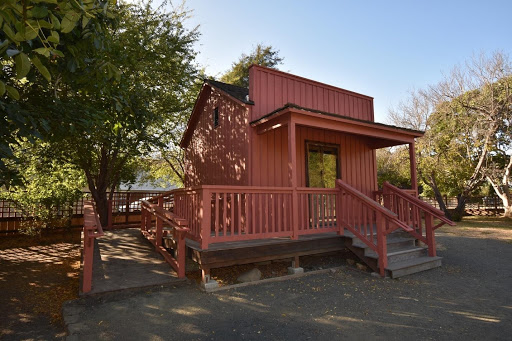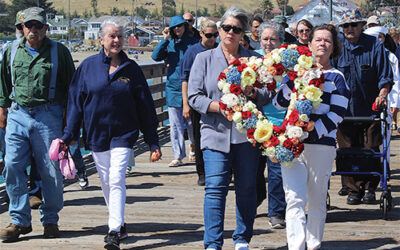Cambria’s Chinese Temple is one of the one of the oldest temples in California. Photo by Rachel Perzel
On November 6, the California State Historical Resources Commission met in Sacramento to consider nominations for federal historic designations. Cambria’s Chinese Temple was one of the sites approved for the designation, which has been a longtime goal of Greenspace, the Cambria Land Trust that owns and maintains the property.
In 2019, a team was formed and, using funds from a Hind Foundation grant, they were able to submit a new application for the temple to be a “California Place of Historical Interest” and now that designation has been granted. Greenspace hired Rincon Consultants and Rachel Perzel, an architectural historian, along with Steve Treffers, senior architectural historian, to assist in developing the proposal. They in turn collaborated with two of Greenspace’s past presidents, Richard Hawley and Wayne Attoe.
“This is a milestone for Greenspace,” Attoe said. “Scores-possibly hundreds-of people over two decades had a part in this accomplishment. Cambrians and others have supported this project through donations, volunteer labor, and expertise. People have helped with mortgage payments for the property and purchased commemorative bricks and benches.”
The California Dept. of State Parks released this summery of the project. “The small board-and-batten wooden building, constructed between 1892 and 1895, served as a central temple and community space for the Chinese community of Cambria and San Luis Obispo County. The building was relocated several times on its lot. The building is significant as a rare surviving example of late 19th-century religious architecture, significant to the Central Coast region where Chinese settlement was spare compared to California’s major cities.”
It is unclear when the Chinese first came to the Central Coast but by the 1860’s Chinese settlers were engaged in seaweed and abalone harvesting. Workers lived isolated along the coast so that they could be near the kelp beds. When it came time to socialize they would travel into Cambria and the Chinese Center. There were several structures in downtown Cambria established by other Chinese immigrants, mostly miners and laborers that served the community. The Temple became a refuge where they could practice their traditions and converse in their native language. But by the 1920s most of the Chinese population had moved to San Francisco and abandoned the Center and other local buildings. The Temple is one of the oldest temples in California to survive.
Greenspace has carefully restored the structure, sometimes referred to as the “Association House,” and it sits in the Creekside Reserve at the heart of the Cambria Historical District. By the state recognizing the Chinese Temple as a California Place of Historical Interest, Greenspace will have more opportunities for grants and gifts which will enhance future events at the site and help with the maintenance.
“John Seed, Greenspace board member and curator for the temple, looks forward to hosting tours again when safe to do so, and to hosting more events like the Chinese brush-painting demonstration and annual festivals,” Attoe said.
To learn more about the history of the Chinese culture on the Central Coast, visit GreenspaceCambria.org



